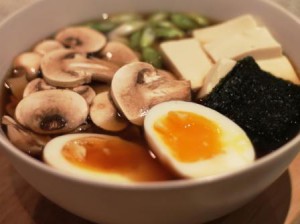The cooking class Japanese noodle soup for beginners is for people who would like to learn how to make the Japanese noodle soup such as ramen soup.
A noodle soup is not a noodle soup in Japan it is the Japanese’s favorite fast food, which is healthy and stuffed with vitamins and minerals.
In this course, you will learn how to make dashi from scratch, just like Japanese chefs in Tokyo.
When you attend the course, you learn step by step, to use Japanese ingredients that give the unique flavors and aromas that know Japanese ramen soup.
You learn how to make healthy and tasty noodle soups which is very popular on a busy day.
You larn how to make Japanese stock by using traditional Japanese raw materials.
You learn how to know the difference between different kind of noodle used in noodle soup.
You work with different Japanese cooking techniques and, cut different vegetables, meats and soy products.
You learn to make 2 tasty and healthy noodle soups that are made from scratch with classical raw materials.
NOTE: This year Noodle soup course is only planned on 4 September 2021 and 13 November 2021.
Read more about the cooking class Japanese noodle soup for beginners
_
Zoë has held sushi courses and cooking classes for A. P. Moller – Maersk, Hugo Boss Nordic, Novo Nordisk, Novartis, Velux, Gorrissen Federspiel, Beierholm revision, Elbek & Vejrup and many more.







